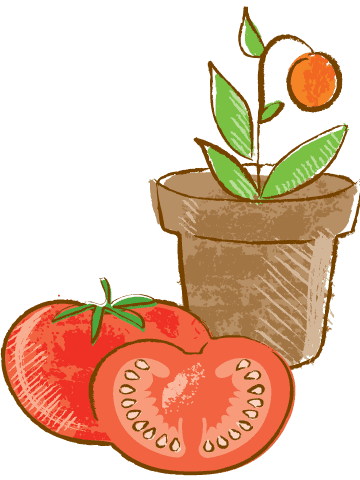When the first set of portable buildings were delivered, students in grades K-5 at West Woodland Elementary had been busy enjoying their hugelkultur garden, originally established with a 2012 Whole Kids Foundation Garden Grant.
Unfortunately, the delivery trucks had only one way in, right in the path of the hugelkultur bed.
A surge in student enrollment meant a need for more classroom space, and the district found the only option was to add portables near the playground—a big sacrifice for an urban school with very limited outdoor space, and not-so-good news for the garden.
“The first time this happened, we took out the bed and kept the frame, then we covered the area all up with plywood to reduce the damage,” says Garden Coordinator Pipo Bui. “The area did get compacted, but we rebuilt the bed. Then a few summers later, they had to add another portable. Now it’s been run over three times.”
As Seattle’s population has grown, the school has welcomed many more students and more portable buildings. Increased foot traffic around the playground area also has taken a toll on the hugelkultur and native gardens. And the only undisturbed outdoor space left is along the perimeter of the property around the building.
A permanent solution was needed for the hugelkultur bed, so students could continue growing their lettuces, kale, strawberries, carrots, radishes, herbs and more.
“We chose the hugelkultur method because of its space efficiency and water conservation,” Pipo explains. “Also this method makes it possible to grow veggies that are usually difficult to grow in our climate. The fact that we could grow broccoli and tomatoes stunned people.”
Hugelkultur is a permaculture gardening method that involves building a mound of biomass materials (logs, sticks, leaves, grass clippings, straw, cardboard, newspaper, compost, etc.) then topping it with soil.
This type of garden bed has many advantages, including: long-term wood decay generates nutrients and heat; it doesn’t need tilling; and a mature hugelkultur garden needs very little water or maintenance.
With a little creative thinking, West Woodland Elementary came up with a solution that would keep their hugelkultur bed from being disrupted by future school expansion projects: movable hugelkultur planters.
The garden was replanted in 4-foot-long metal horse troughs, sourced from a local hardware store. Designed by Aaron Armstrong, a parent volunteer, the planters have the usual hugelkultur materials layered inside, and holes drilled in the bottom. They’re set on cement blocks for proper drainage and have been relocated to an available blacktop area.
Hopefully they won’t be bothered again, but if construction vehicles do need to get through, a forklift is all that’s required to move the garden beds out of the way.
A small drawback to the containers is that they may require a small amount of regular watering, whereas an in-ground permaculture bed usually needs little to no watering.
“But it is still space efficient and conserves water,” Pipo says. “If we had imagined this possibility, we would have gone with a permaculture container in the first place, rather than a permaculture bed. For gardeners, it’s nice to have direct ground contact, but for many urban schools, a permanent in-ground bed just isn’t flexible enough. These troughs are a pretty good solution. If we have to move them, we can.”



